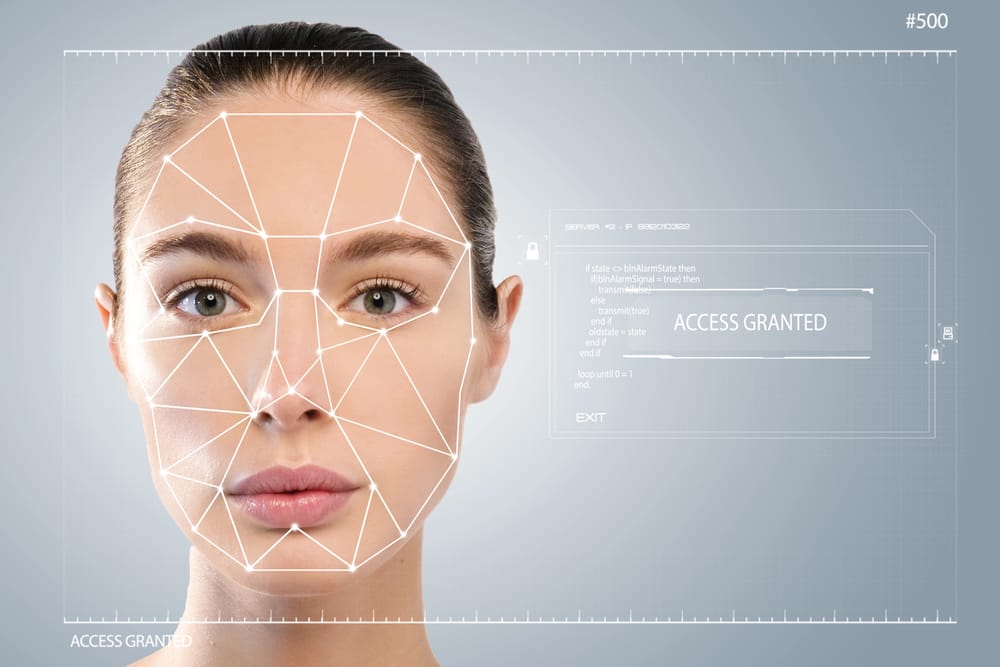Enhancing Customer Experience with Advanced Biometrics
The convergence of biometrics and customer experience
In HealthTech, trust is currency — and biometrics is fast becoming its most valuable bank.
From medical devices to telehealth platforms, the integration of advanced biometric technology is reshaping how patients, providers, and executives think about security, personalization, and operational efficiency.
For CEOs, Boards, and CXOs in the Medical Device and HealthTech industries, the decision to adopt biometrics is no longer just a technology play — it is a strategic move tied directly to customer experience, competitive positioning, and even succession planning for future-ready leadership.
In a market where digital transformation in healthcare is accelerating, biometric authentication offers a rare dual benefit: uncompromising security and frictionless convenience. As a NextGen blog on aligning leadership talent with strategic goals points out, success in adopting emerging technologies is not just about tools, but about putting the right people in place to drive those changes. The right biometric strategy is no exception.
The Evolution of Biometrics In Healthtech And Medical Devices
Biometric technology has moved far beyond simple fingerprint scanning. In modern HealthTech, the scope now includes:
- Facial recognition for secure patient portal access
- Iris scanning for authentication in high-security hospital labs
- Voice recognition for hands-free authentication in surgical environments
- Multimodal systems that combine two or more biometric identifiers for higher accuracy and fraud prevention
Medical Device manufacturers are embedding these capabilities into diagnostic tools, wearable health trackers, and portable monitoring devices. HealthTech software providers are integrating biometric logins into telehealth apps, ensuring that only the right patient — and the right clinician — can access sensitive data.
The speed of adoption is driven partly by regulatory pressures and partly by customer expectations. Patients want their data protected, but they also want rapid, intuitive access to services. This convergence is where biometrics shines: it eliminates the trade-off between security and usability.
Driving Patient Trust Through Enhanced Security Measures
In healthcare, the cost of a security breach is measured in more than financial losses — it erodes patient trust, damages brand reputation, and invites regulatory scrutiny. Advanced biometrics offers a robust defense layer that goes beyond passwords and PINs.
By leveraging unique physical and behavioral identifiers, biometric systems significantly reduce the risk of credential theft or unauthorized access. This capability is particularly important for medical devices connected to the Internet of Medical Things (IoMT), where each connected device represents a potential entry point for cyberattacks.
From a Board and CEO perspective, investing in biometrics can also be a proactive compliance measure. Whether it’s HIPAA in the U.S. or GDPR in Europe, biometric integration can help meet — and in some cases exceed — regulatory requirements for identity verification and data protection.
In addition to operational and security gains, advanced biometrics present a unique opportunity for CEOs and Boards to differentiate their organizations in competitive Medical Device and HealthTech markets through brand positioning. Patients increasingly expect healthcare providers to offer the same level of seamless, secure experiences they receive from leading consumer technology brands. Integrating biometrics can bridge this gap, aligning healthcare user experiences with those found in banking, retail, and travel.
This strategic positioning can also influence recruiting outcomes — top HealthTech professionals are more inclined to join organizations known for innovation and forward-thinking leadership. As Executive Search partners often emphasize, elite candidates evaluate potential employers not only on compensation but also on their reputation for adopting impactful technologies. By visibly committing to biometrics, leaders can attract a higher caliber of talent, strengthen succession pipelines, and ensure long-term organizational resilience in a market where both technology and patient expectations evolve rapidly.
Ultimately, these measures don’t just satisfy compliance checklists; they signal to patients that the organization takes their safety seriously. In competitive HealthTech markets, trust becomes a differentiator, and biometrics can be the trust-building technology of choice.
Personalization And Convenience: Beyond Security
While biometrics excels at protecting sensitive information, its potential in customer experience goes further. By using biometric identifiers as a gateway to personalization, HealthTech companies can deliver care that is not only secure but also tailored to individual needs.
Examples include:
- Personalized device settings on wearable monitors, automatically configured based on the user’s biometric profile
- Streamlined check-ins at hospitals and clinics, reducing wait times and administrative burden
- Adaptive health recommendations generated by AI systems that verify the patient’s identity via biometrics before delivering sensitive data
For CEOs and CXOs, these capabilities translate into tangible business outcomes: higher patient satisfaction scores, increased retention rates, and a reputation for innovation. This is particularly critical in competitive Medical Device and HealthTech sectors where speed, security, and personalization often define market leaders.
Board and CEO Perspectives On Biometric Adoption Strategies
For a CEO, implementing advanced biometrics is not simply a technical decision — it is a strategic investment with long-term implications for patient trust, compliance, and market positioning. Boards have a fiduciary responsibility to ensure that any significant technology deployment aligns with the organization’s mission, values, and growth objectives.
Key considerations include:
- ROI and cost-benefit analysis — Determining whether biometric adoption will improve operational efficiency enough to offset integration costs
- Vendor selection — Ensuring technology partners have a proven record in healthcare-specific biometric solutions
- Change management — Preparing internal teams and patient communities for a smooth transition to new authentication processes
When Boards champion biometric innovation, it signals market leadership and a willingness to invest in technologies that improve the patient journey. As highlighted in NextGen’s piece on strategies for securing top executive talent, bold decisions require leaders who can balance innovation with risk management — a trait that becomes invaluable in high-stakes technology rollouts.
The Recruiter’s Role In Sourcing HealthTech Biometric Talent
Advanced biometrics projects require niche expertise. From algorithm engineers specializing in facial recognition to compliance officers versed in HIPAA and biometric data privacy laws, the talent pool is highly specialized and fiercely competitive.
Executive Search firms play a critical role by:
- Mapping global talent markets for experts in biometric technologies
- Identifying leaders with a history of scaling innovation in regulated industries
- Advising on compensation strategies that attract candidates without disrupting internal pay structures
Incorporating recruiters early in the technology adoption timeline ensures the right leadership team is in place to execute the vision. As a result, recruiting becomes a proactive enabler of strategic planning, rather than a reactive scramble when talent gaps emerge.
Succession Planning For Emerging Tech Leadership Roles
With biometrics expected to evolve rapidly in healthcare, succession planning must address not just current leadership roles, but also positions that do not yet exist. For example:
- Chief Biometric Security Officer
- Director of Patient Identity Solutions
- VP of Digital Health Authentication
Boards and CEOs who anticipate these needs now can build a talent pipeline that keeps them ahead of competitors. Embedding these future roles into succession planning frameworks ensures smooth leadership transitions and prevents disruption during critical implementation phases.
This forward-looking approach aligns with the principle from NextGen’s article on the importance of leadership readiness— that sustained performance depends on having leaders prepared for tomorrow’s challenges, not just today’s.
Overcoming Adoption Challenges: Privacy, Ethics, And Regulations
Despite its advantages, biometric technology in healthcare faces hurdles:
- Privacy concerns — Patients may be uneasy about storing sensitive biometric data
- Regulatory compliance — Navigating varying state, national, and international laws on biometric data usage
- Ethical considerations — Ensuring bias-free algorithms and equitable access to biometric-enabled services
Boards must ensure these challenges are addressed through clear governance frameworks, transparent communication with patients, and the implementation of ethical AI principles in biometric systems. Addressing concerns head-on builds credibility and strengthens public trust.
Case Study: Successful Biometric Integration In HealthTech
A large telehealth provider recently rolled out multimodal biometric authentication — combining facial recognition with voice verification — to secure patient consultations. The system reduced login times by 40%, improved compliance audit scores, and increased patient satisfaction ratings.
By integrating biometrics into both their mobile app and web platform, the provider offered a consistent and secure experience across all touchpoints. The Board credited the success to early engagement with recruiters who sourced a CTO experienced in large-scale biometric deployments.
The Future Of Biometrics In Healthcare Ecosystems
Looking ahead, we can expect biometrics to extend beyond authentication into broader healthcare applications:
- Remote monitoring — Wearable devices that continuously verify the user while tracking vital signs
- Smart hospitals — Automated access control to restricted areas, reducing human error and improving safety
- Personalized treatment plans — AI-driven recommendations based on biometric health data
As these innovations mature, competitive advantage will belong to companies that integrate biometrics as part of their long-term strategic vision — not as an afterthought.
Biometrics As A Competitive Differentiator
Advanced biometrics is no longer futuristic — it is here, and it is redefining the patient experience in Medical Device and HealthTech sectors. For CEOs, Boards, and CXOs, the opportunity lies in deploying this technology in a way that enhances trust, streamlines access, and personalizes care.
When backed by the right leadership team, robust succession planning, and ethical implementation, biometrics can become a lasting competitive differentiator. The organizations that act decisively now will be the ones patients — and investors — trust tomorrow.
About NextGen Global Executive Search
NextGen Global Executive Search is a retained firm focused on elite executive placements for VC-backed, PE-owned, growth-stage companies and SMEs in complex sectors such as MedTech, IoT, Power Electronics, Robotics, Defense and Photonics. With deep industry relationships, succession planning expertise and a performance-first approach to recruiting, NextGen not only offers an industry-leading replacement guarantee, they also help CEOs and Boards future-proof their leadership teams for long-term success. They also specialize in confidentially representing executives in their next challenge.














